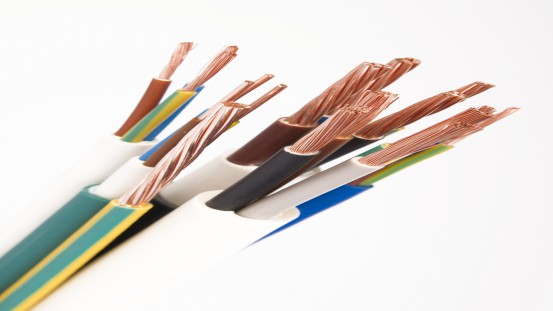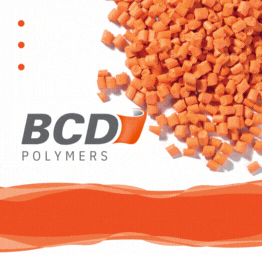The range, which is marketed under the brand DRYFLEX® CABLE, includes grades based on different polymer chemistries, including EVA, TPE and TPV technologies. This brings one of the widest ranges of properties and customisation possibilities to the market and gives cable manufacturers the flexibility to select the best solution for their application.
The Dryflex Cable range includes Low Smoke Halogen Free (LSHF) or Low Smoke Zero Halogen (LSZH) flame retardant compounds. They are designed to offer enhanced flame retardant properties with low smoke and low toxicity. The compounds are RoHS, SVHC and REACH compliant and halogen-free according to IEC 60754 Part 1/2.
Speaking of the development, Mark Clayton, managing director at HEXPOL TPE’s UK site, commented “The challenge we set ourselves was to develop materials that exceed global standards for reliability and durability, combined with the lowest toxicity and smoke levels for human safety. With our new grades we offer market leading performance with high levels of customisation and easy processing”.
One example compound for low voltage power or data cable applications is Dryflex Cable 52180 N. While Dryflex Cable 51898 N was developed for demanding applications requiring increased thermal and fluid resistance. Their properties can be seen in the tables below.
|
DRYFLEX CABLE 52180 N |
|
|
|
|
PROPERTY |
UNITS |
TYPICAL VALUE |
TEST METHOD |
|
Hardness |
Shore D |
52 |
ISO 868 |
|
LOI |
% |
42 |
ISO 4589-2 |
|
Halogen Content |
< % Halogen Level Requirements |
Exceeds minimum requirements |
IEC 60754 Part 1/2 |
|
Volume Resistivity Permittivity |
Ohms-cm
|
5.99 x 1014 4.44 |
ASTM D257 ASTM 150-81 |
|
Tensile Strength |
MPa |
10.7 |
ISO 37 |
|
Elongation at Break |
% |
135 |
ISO 37 |
|
DRYFLEX CABLE 51898 N |
|||
|
PROPERTY |
UNITS |
TYPICAL VALUE |
TEST METHOD |
|
Hardness |
Shore A |
92 |
ISO 868 |
|
Halogen Content |
< % Halogen Level Requirements |
Exceeds minimum requirements |
IEC 60754 Part 1/2 |
|
Tensile Strength |
MPa |
10.5 |
ISO 37 |
|
Elongation at Break |
% |
250 |
ISO 37 |
|
Heat Ageing 7 Days at 125 °C |
|||
|
Hardness Change |
Shore A |
+1 |
ISO 868 (after 15 seconds) |
|
Tensile Change |
% |
+29 |
ISO 37 |
|
Elongation Change |
% |
-27 |
ISO 37 |
|
Oil Resistance : IRM 902 oil, 7 days at 90 °C |
|||
|
Hardness Change |
Shore A |
-12 |
ISO 868 (after 15 seconds) |
|
Tensile Change |
% |
-5 |
ISO 37 |
|
Elongation Change |
% |
-29 |
ISO 37 |
PROCESSABILITY
|
KEY FEATURES:
|
The Dryflex Cable compounds, as with PVC, can be processed using standard extrusion equipment. Compounds are available ready to use, with no post vulcanisation required, helping to minimise steps and improve productivity. The compounds are fully recyclable and any production waste can be reprocessed.
TYPICAL APPLICATIONS
Dryflex Cable compounds provide added security in areas of high human occupancy, where people need to be evacuated quickly and safely. They can also be used in restricted areas containing expensive or sensitive equipment. These could include high-rise buildings, hospitals, airport, train and transport hubs, communication exchanges, data centres, shopping centres, power generation facilities and offshore platforms.
They offer excellent thermomechanical properties making them suitable for both telecommunication and electric cables. Typical applications include low voltage, data, insulation, jacketing and bedding.



